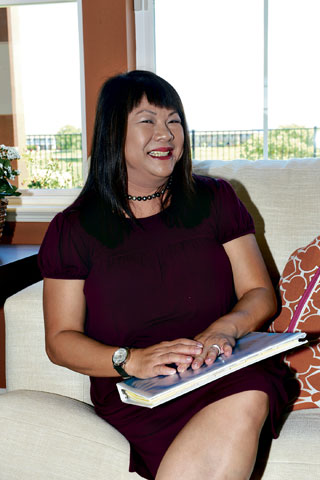How Cost-Efficient is Your Home?
The 56th annual Parade of Homes sponsored by the Building Industry Association this year focuses on shopping for a home like you shop for a car – what gets good ‘mileage?’
ver the past half century, the Building Industry Association has seen many shifts in the Hawaiian paradigm of what the people of the Islands are looking for in their dream homes.
Just five years ago, its annual Parade of Homes was filled with custom homes with astronomical price tags; they even had a condo on the Big Island going for a cool $3 million. Money was free and easy, and dreaming big was not dreaming at all, it was the new reality.
Then 2008 happened, and builders, bankers and buyers had a rude awakening. Multimillion-dollar condos now made as much sense as rotary phones, and architects had to change their visions.
The fruit of the new vision is being realized in the 56th annual Parade of Homes, titled “A New Home Revolution,” in which seven homes vie for the cherished Best in Show and Grand Champion designation.
Gone are the million-dollar competitors. No more custom homes from the wannabe Daniel Burnhams and Frank Lloyd Wrights of Hawaii. These new models all come as part of developments working to streamline their production and lower the homeowners’ operating costs. In fact, they mirror the automobile industry these days much more than the housing one.
“There is a big push for efficiency because they are trying to attract first-time homebuyers, people want to know what their costs are going to be,” says Jay Kadowaki, POH judging chairman.
All seven entries this year are located in the Ewa Beach and Kapolei area, ranging from $399,999 to $999,999 and as they try to find a leg up on one another, it is driving the green revolution in Oahu’s housing.
“Developers here are so competitive, everybody is looking for that edge, lowest price, most value,” says Kadowaki, who owns his own construction firm. “Now it is running cost, it is a huge sales point.” (That’s industry-speak for what it costs to run an AC in your home.)
Single-wall construction is heading the same route as cinder block, apparently. The new wave is walls filled with Icynene insulation, dual pane windows and central air with high SEER ratings. The idea follows the same philosophy as the electric car: By lowering the costs to run the home, you raise the amount of money available to purchase the home itself.
“The one thing I have seen over the years is that everyone is building a lot greener now,” says Kadowaki, who started with POH in 2007. “We could not believe some of the air conditioning numbers; the electrical cost to power these is so low. We have on central AC in these homes 24/7 and the electrical cost per month is right at $200.”
Anyone who pays an electricity bill in this state may scoff at those numbers, but such is how far the technology has come in making things more efficient, and these numbers are right up front from the developers, just like when you walk into a dealership.
“It is like buying a car. You get your city and highway miles, fossil fuel is going out of this world and it is a dramatic difference in the costs,” says Dean Asahina, building judge for POH and president of his own firm, Universal Construction. “The numbers are just a snapshot. If fossil fuels go up, the costs will, too, but at least it is indicative of the cost at that point in time and you can run your AC 24 hours a day.”
The savings aren’t all derived from paring down the cost of cooling the home. The entry named The Trades by Gentry Homes in Ewa Beach comes equipped with a photovoltaic system, allowing homeowners to generate their own electricity and dual flush toilets to improve water conservation.
Packing all these amenities into homes that will sell for under a half-million dollars was baffling at first to Asahina, whose company usually only builds one home at a time. It is simply a product of economies of scale, and the winner is the first-time homebuyer who, while they will not have a unique home, do get a home packed with amenities they otherwise would never have a chance to afford.
“It is amazing to me, because I am in the construction industry and I design homes, the value in these homes – there is no way that I could match it,” says Asahina, who has been building homes here for the past 48 years. “The amount of stuff that is in the basket and the amount you pay for that basket, it is just amazing!”
The greenness of the home is not the only judging criteria, however. There are seven judges, each with their own specialty: architecture, contractor, appraisal, Realtor, interior design, landscape and financing. The first six seem to be natural extensions of judging a building, but how exactly do you judge financing a home?
“I am not looking at the house itself, I probably have the easiest job out of all the judges,” says Linda Nakamura, the financing judge and vice president of First Hawaiian Bank. “For me, it is pretty black and white. In today’s market the rates are so low, so we are looking to see what the developers are providing. Are they covering closing costs? Are they providing credits and incentives?”
In each development, she looks at the perks the developers are including, but also at things such as if they have advisers there to help the first-time buyer through the process, how easily understandable the language is for the buyer and how flexible their financial packages are. While these are not as glamorous as granite countertops, they may be some of the most important issues that a new homeowner is going to face.
“It is great to market this side of the island,” says Nakamura, who bought her first home in Makakilo. “We are looking at Kapolei as the Second City. This is where the families are moving to. Most first-time buyers cannot afford a home in town. It’s great for families to get into a startup home and move up later.”
While she has a natural rooting interest in more people buying homes as manager of the Mortgage Service Center at First
Hawaiian, she is excited about the positive impact that having affordable and efficient new homes can have on young families.
“From a community standpoint, we want people in homes,” says Nakamura. “It helps the economy, and statistics show that kids in a steady home, rather than bouncing from one residence to another, do better in school.”
Making sure that the home is built to the highest standard is where Asahina picks it up. A half-century in the business gives him the critical eye he needs, and each site has a building expert who can answer the questions he may have about the materials within the walls.
His judgments on the quality of the work, the visual appeal of the overall design and the appropriateness of the materials all inform his decision, but when it comes down to the final grade, he uses a much less regimented rubric.
“The one thing that I look for, and I know this is subjective, irrespective of the details – ceiling, the stairwell, whatever it may be – is the comfortability of the home,” says Asahina, coining a phrase of his own design. “Do I want to sit down? If I do, I think it is a good thing. A home should be something that you can escape to and re-energize.”
The Parade of Homes will be held in the first two weeks of October with open houses every day in all seven entrants. Winners were to be announced Oct. 2 at the Awards Gala to be held at The Royal Hawaiian.
Visitors to any of the open houses get to enter for a chance to win a photovoltaic system from Bonterra Solar Services. If you would like information on the gala, locations of the entrants or to see floor plans, you can check out its website at biahawaii.org or call 847-4666.







